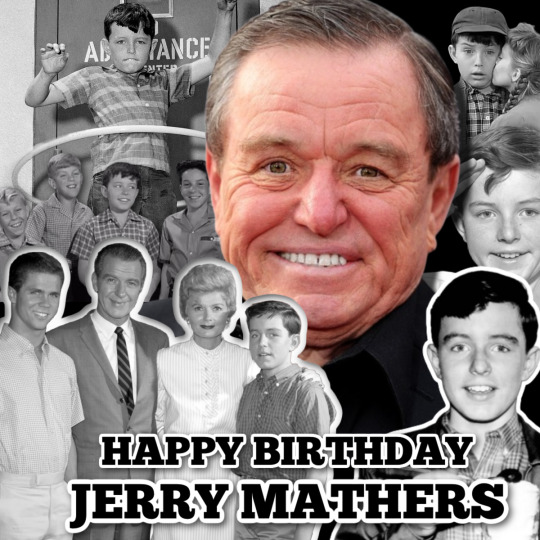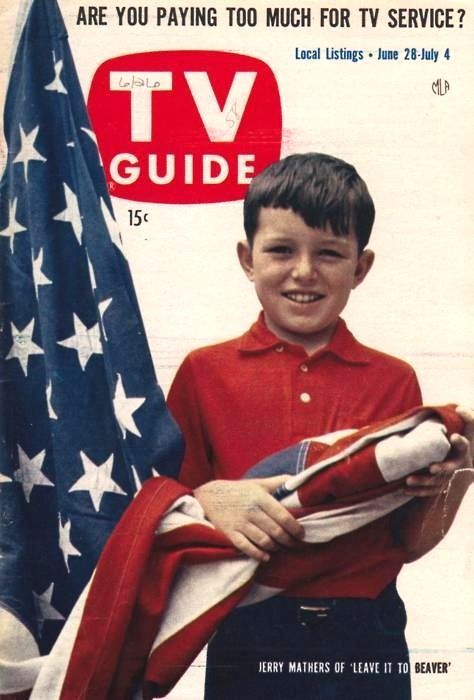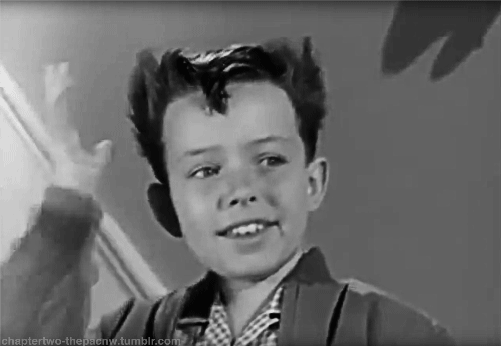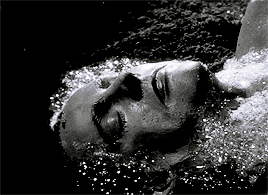#theodore 'beaver' cleaver
Text
Jaime and Roy

Zava

5 notes
·
View notes
Text

#jerry mathers#the beaver#leave it to beaver#birthday#june 2022#design#ward cleaver#june cleaver#wally cleaver#theodore cleaver#barbara billingsley#hugh beaumont#tony dow#june2nd
0 notes
Photo

Tony Lee Dow (born April 13, 1945 - July 27, 2022) Television actor, film producer, director, and sculptor. He is best known for his role in the television sitcom Leave It to Beaver, which ran in primetime from 1957 to 1963. Dow played Wally Cleaver, the older son of June (played by Barbara Billingsley) and Ward (played by Hugh Beaumont) Cleaver, and the older brother of Theodore "Beaver" Cleaver (played by Jerry Mathers). From 1983 to 1989, Dow reprised his role as Wally in a television movie and in The New Leave It to Beaver.
Dow performed on Leave It to Beaver for six years, until the series ended in 1963. After that, he appeared on other television shows, including My Three Sons, Dr. Kildare, The Greatest Show on Earth, Never Too Young, and on five episodes of Mr. Novak in three different roles. Then, from 1965 to 1968, he served in the U.S. National Guard, interrupting his acting career. On his return to acting, he guest starred on the television series Adam-12, Love American Style, Knight Rider, Square Pegs, The Mod Squad, The Hardy Boys, and Emergency!
From 1983 to 1989, Dow reprised his role as Wally Cleaver in a reunion television movie and in a subsequent series The New Leave It to Beaver.
In 1986, he wrote an episode of The New Leave It to Beaver. In 1987, he was honored by the Young Artist Foundation with its Former Child Star Lifetime Achievement Award for his role as Wally Cleaver.
In 1989, he made his debut as a director with an episode of The New Lassie, followed by episodes of Get a Life, Harry and the Hendersons, Coach, Babylon 5, Crusade, and Star Trek: Deep Space Nine. He served as the visual effects supervisor for Babylon 5. In 1996, he provided visual effects for the Fox television movie Doctor Who. (Wikipedia)
33 notes
·
View notes
Text
Jerry Mathers Reflects on His Infamous ‘Leave It to Beaver’ Audition
Jerry Mathers was everyone’s favorite kid brother in Leave It to Beaver, playing Theodore Cleaver — the Beaver — in 235 episodes between 1957 and 1963.
After the show’s run, Jerry finished school and then served in the California Air National Guard. In the years after, he continued to make television appearances on shows like The Love Boat and Parker Lewis Can’t Lose, as well as playing the…

View On WordPress
0 notes
Text
"With Ward Cleaver's passing, it seems he willed all of his estate to Theodore."
"Wow. He really did leave it to Beaver"
0 notes
Conversation
Beaver: Scary movies set in houses are the worst.
Beaver: *I* live in a house :(
#show: litb#theodore 'beaver' cleaver#source: unknown#Leave it to Beaver#incorrect quotes#incorrect classic tv
3 notes
·
View notes
Text

#barbara billingsly#jerry mathers#june cleaver#theodore cleaver#beaver cleaver#vintage#classic television#retro tv#1960s
75 notes
·
View notes
Text

#jerry mathers#leave it to beaver#beaver cleaver#1950s#magazine cover#tv guide#american flag#theodore beaver cleaver#child star
2 notes
·
View notes
Conversation
Beaver from Leave it to Beaver: Hey Wally...
Wally from Leave it to Beaver: Yeah, Beav?
Beaver from Leave it to Beaver: Does it hurt to die?
Wally from Leave it to Beaver: I dunno, Beav...
Beaver from Leave it to Beaver: Why not?
Wally from Leave it to Beaver: ...
Beaver from Leave it to Beaver: Wally? Why'd your eyes go all black?
Wally from Leave it to Beaver: Wanna find out?
3 notes
·
View notes
Text
Interview: Jerry Mathers
It’s the Beaver! Richard interviews Jerry Mathers of “Leave It to Beaver” fame. He talks about his start in show business, the celebrities he has worked with, his famous role on the classic series, and how feels about being known as The Beaver.
(more…)
View On WordPress
#actor#beaver#classic TV#interview#Jerry Mathers#Leave It to Beaver#Silicon Valley Comic Con#Theodore Cleaver#video
1 note
·
View note
Photo

leave it to beaver |1959|
#gif#beaver cleaver#theodore cleaver#leave it to beaver#jerry mathers#television#black and white#1959#pompadour
58 notes
·
View notes
Photo

Character Actress
Doris Packer (May 30, 1904 – March 31, 1979) Character actress possibly best known for her recurring role as Mrs. Cornelia Rayburn, Theodore Cleaver's elementary school principal in the television series, Leave It to Beaver.
Packer portrayed the mother of millionaire playboy Chatsworth Osborne, Jr. on CBS's The Many Loves of Dobie Gillis. Earlier, she played Clarice Armitage, mother of Milton Armitage, whose character on the series Osborne replaced. In most of her screen roles, she was known for her aristocratic and intellectual bearing and precise use of the English language.
In 1954, she appeared as Florence on an episode ("Sixteen Vertical") of Rod Cameron's crime drama series, City Detective. In 1955–1956, Packer appeared three times as a nurse in the NBC sitcom It's a Great Life, featuring Frances Bavier. In 1958, she guest-starred on Rod Cameron's subsequent syndicated series, State Trooper, in "The Last Stage Robbery", an episode with a surprise ending.
Packer played wealthy society matrons on The George Burns and Gracie Allen Show and I Love Lucy and as Mrs. Wiley on The Andy Griffith Show. She had a recurring role as Clara Mason in the 1960-61 sitcom Happy. Packer played Mrs. McGillicuddy in the 1961 episode "Gladys' Political Campaign" on the CBS sitcom, Pete and Gladys.
She appeared in an episode of The Twilight Zone entitled "I Sing the Body Electric". She played the wealthy Mrs Huntingdon in a 1963 episode "I'm No Henry Walden!" on CBS's The Dick Van Dyke Show. She appeared on three episodes of The Beverly Hillbillies as wealthy matron Mrs. Fenwick. She made a guest appearance on Perry Mason in 1962 as Mrs. Campion in "The Case of the Polka Dot Pony".
During the first season of Petticoat Junction in 1964, Packer appeared in the thirtieth episode, titled "Kate and the Dowager". She portrayed a hotel guest whom Kate Bradley was trying to impress.
Packer appeared on NBC's anthology series, The Barbara Stanwyck Show. In 1964–1965, Packer appeared on the short-lived CBS sitcom, Many Happy Returns, starring John McGiver and set in the complaint division of a fictitious Los Angeles department store with the unlikely name of Crockmyer's. In 1965 she appeared in the episode, 'We Love You, Miss Pringle' in My Favorite Martian: Season 2, Episode 26. In 1973, she guest-starred in an episode of the situation comedy A Touch of Grace. (Wikipedia)
#Doris Packer#Character Actress#TV#Leave It To Beaver#The Many Loves of Dobie Gillis#The Beverly Hillbillies#The Dick Van Dyke Show#Happy#The Andy Griffith Show
4 notes
·
View notes
Text
‘Leave It To Beaver’ is the image of suburbia that 1950s America needed
Leave It To Beaver was an idealized depiction of a happy, suburban family, which simultaneously attracted and alienated its middle-class viewership. The show is centered on the Cleaver family, and follows the adventures of Theodore ‘Beaver’ Cleaver. Theodore is the perfect young boy – he’s funny, kind, and often naïve. Theodore’s parents are also images of the quintessential 1950s couple. Theodore’s father, Ward, and his mother, June, are always composed, kind, and understanding. June almost aggressively conforms to the ideal of a housewife and homemaker – she’s always cooking or cleaning, her entire personality stemming from her ability to care for the rest of the family. They are happily married, and the show makes it seem as though the family biggest issue is simply Theodore’s unfinished book report.
Leave It To Beaver is clearly a glossy, edited take on the American middle-class, but it also reflects the culture of the time. In the 1950s, “the family sitcoms reflected – and reinforced – much of the social conformity of the period” (Halberstam). The 1950s were a time of conformity and deeply rooted social norms, and shows like Leave It To Beaver gave viewers an idea of what they were aiming for.
It’s also important to note just how fictional Leave It To Beaver was. Not only were the family dynamics perfect, but 1950s television was barely reflective of the diversity within America, with Halberstam noting, “There were no Greeks, no Italians, or no Jews in this world, only Americans, with names that were Anglo-Saxon and Protestant; it was a world of Andersons and Nelsons and Cleavers.” Leave It To Beaver and other shows of the time glossed over the class, racial, and ethnic divisions within society, ignoring these in favor of a picturesque, almost monotone new world. Additionally, the financial situation of the family in Leave It To Beaver and other sitcoms barely represented that of the American middle class. In these fictional families, “money was never discussed, and the dark shadow of poverty never fell over their homes, but no one made too much or they might lose their connection with the pleasantly comfortable middle-class families who watched the show and who were considered the best consumers in the country” (Halberstam). Leave It To Beaver followed a family that was just wealthy enough to be desirable, but not quite wealthy enough to alienate its viewers.
Ultimately, I think Leave It To Beaver provided an escape for viewers to remind themselves of the American Dream and the perfect, nuclear family, while also neglecting the numerous issues and struggles that American families faced during the time. Many viewers, especially children in tense or struggling homes, might have seen these shows as unfair or wholly unrealistic – attitude that might have begun a shift towards the varied viewpoints and exploratory storylines we see on television today.
Today, there are few popular sitcoms that embody the spirit of shows like Leave It To Beaver. While there are examples of successful sitcoms, these sitcoms are often marked by diverse and unique characters, creating a variety of storylines to be explored on television. In fact, these storylines tend to move away from just family life, and into new areas. Top rated comedic sitcoms likeThe Good Place, The Office, an Brooklyn 99 all have vastly different premises, but each have found success on television. It seems as though, while diversity is still an issue in Hollywood, most successful shows on television no longer seek to represent an idealized suburban family, and are instead seeking to form real connections with audiences and depict authentic stories. I think this shift towards detailed and considerate storytelling is also representative of a shift in American culture. I think that viewers in the U.S., now watch television to escape, to see a world which is completely separate from their own, and explore new connections and possibilities. This comes as a stark contrast to the goal of shows like Leave It To Beaver, which sought to give its viewership an image of perfection that they were to aspire to be.
1 note
·
View note
Text
sexism, misogyny, and absentee parents really razz my berries: traditional 1950s nuclear families as seen in tv and film

Leave it to Beaver (1957)
“Leave it to Beaver”, the 1957 sitcom about Theodore “The Beaver” Cleaver growing up in his suburban neighborhood, is a classic portrayal of what it means to be a “perfect family” in the 1950s.
The Perfect Sons: Beaver, a curios yet naive kid, is everything American wants in a son. In a scene from the first episode, he constantly cracks jokes and is even asked to be the fire marshal in the school parade, winning both the approval of his fellow students and the teacher. The show portrays him as confident, funny, charming, and as someone who always tries to avoid getting in trouble (and who always apologizes if he does). Beaver also has an older brother, Wally Cleaver, who emulates these same idealistic goals in a son. His main personality trait outside of this is to help Beaver in his antics and have some witty repartee with him. In the same episode, the only thing Wally does is write a fake letter for Beaver to give to his teacher and also help him pretend to take a bath when he doesn’t feel like it.
The Role of Each Parent: the Homemaker and the Breadwinner: His picture-perfect mother, June Cleaver, is the only true source of discipline in the house. In the same episode, June always makes sure the kids are doing what they are supposed to, and goes to meet Beaver’s teacher (without the father). The “man of the household”, Ward Cleaver, is barely around and merely serves a looming paternal presence that reminds those who forget it with a few inappropriate jokes and “mmmhmms”. He receives flowers from the teacher, after Beaver lied about his father being severely burned, and jokes about June’s brief suspicion that he’s cheating on her. Meanwhile, June cleans, goes to these parent meetings, takes care of the kids, and gives them a talking to, all without a single hair out of place or makeup smudged. She takes care of her household, and Ward takes care of her financially. June is the perfect American woman: beautiful, eloquent, charming, and emotional only when she needs to be.

The Invasion of the Body Snatchers (1956)
“The Invasion of the Body Snatchers”, the 1956 film about an alien invasion in Santa Mira, demonstrates the traditional gender roles of the time. We have Dr. Miles Bennel, a handsome, tough, doctor who also happens to have a loveable-sensitive side all while being the hero. Becky (his formal girlfriend) comes to visit him and fall in love and finds herself in apocalyptic mayhem.
Becky: The Girl Next Door: Miles and Becky’s dynamic on-screen is exactly what America expects of a typical mand and woman. Becky is beautiful, sweet, and idolizes Dr. Bennel as her hero. She never speaks up against him or her father, and always listens to what they tell her to do. Every time Becky is scared, she looks to Miles for help. Just like June Cleaver, she’s charming but never angry.
Dr. Bennel: The film perpetuates also perpetuates traditional gender roles to the max. The man is the breadwinning hero, and the woman is the beautiful and subservient sidekick there for him at every turn. He always saves the day and saves her from the aliens and herself. In the scene where Dr. Bennel and Becky run towards the highway, Dr. Bennel continuously has to drag Becky across the plains and make sure she doesn’t sleep. He’s her caretaker and her hero, and even by the end of it he is able to save the day and gets to a local police station to tell them what happened.

Rebel Without A Cause (1955)
Rebel Without A Cause, the 1955 movie that changed the course of American film, shows how straying traditional family values can cause chaos, and even death. Jim, played by James Dean, is a highschool junior who’s new in town and is arrested for getting into a fight with someone who called him “chicken”.
Masculinity and Honor: His toxic masculinity and obsession with honor stems from his relationship with his father and is the reason why he hates being called chicken. His father, Frank Stark, is anything but masculine or honorable by 1950s standards. He is scared of his wife. In a scene where he cooks dinner for his sleeping wife, he wears a feminine apron and struggles to clean up when his plate full of food falls on the floor. Jim is disgusted when he sees this, embarrassed that his father would ever emasculate himself by doing such a thing. His father also listens to everything his wife says. Even when they do have a back and forth, he ends up agreeing with her by the end of it, and like the classic male stereotype, takes it as if it was his own. By seeing his father this way, Jim, in turn, craves honor and will do anything to prove it to anyone who challenges it. So when Buzz calls Jim a chicken, he gets pissed.
Getting Angry isn’t Feminine: We also see traditional female roles being enforced through the character of Judy and Jim’s mother, Carol. This is shown in a bad light because her dysfunction is portrayed as the reason for Jim’s dysfunction. Carol and Judy both get mad, and aren’t afraid of what other people think and who sees it. Contrast to Carol, Judy craves attention from her family, her father and particular. In a scene after school, Judy asks her father for a kiss. After refusing multiple times, Judy kisses him on the cheek anyway, causing her father to slap her for acting like a child. She storms off angrily and heads off to the chicken fight between Jim and Buzz. Judy loves attention which is why she wears lipstick, because that’s the only time her father on the people around her pay attention to her and what she has to say. No one seems to really listen to her, except maybe Jim, when she gets angry or emotional. Through this, the film shows that getting angry isn’t feminine, which is a similar expectation that we have seen in other forms 1950s media like Leave it to Beaver.
#leave it to beaver#rebel without a cause#invasion of the body snatchers#1950s#1950s art#1950s tv#1950s film
5 notes
·
View notes
Conversation
Beaver: What’s an extreme sport?
Gilbert: Doing your homework while the teacher is collecting it.
#show: litb#theodore 'beaver' cleaver#gilbert bates#source: twitter#Leave it to Beaver#incorrect quotes#incorrect classic tv
4 notes
·
View notes